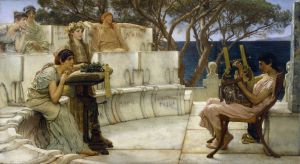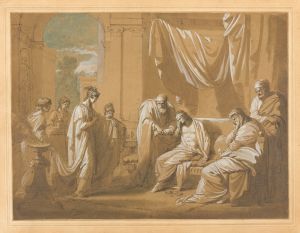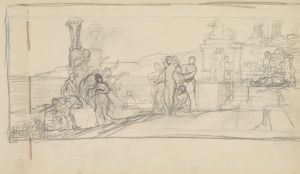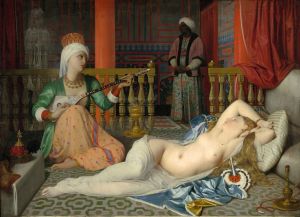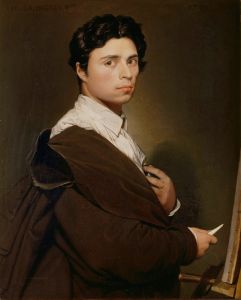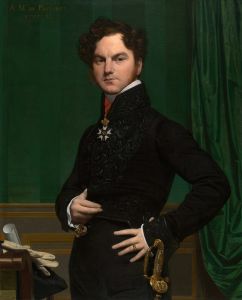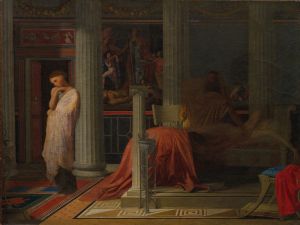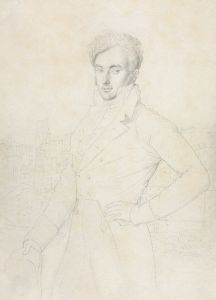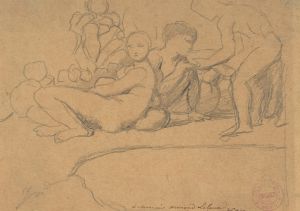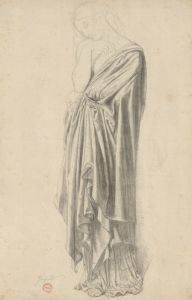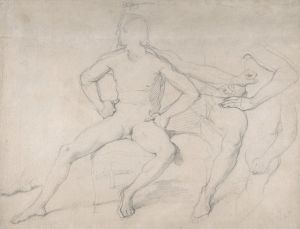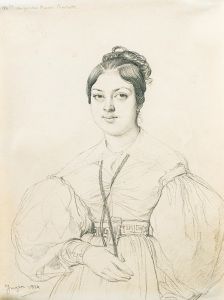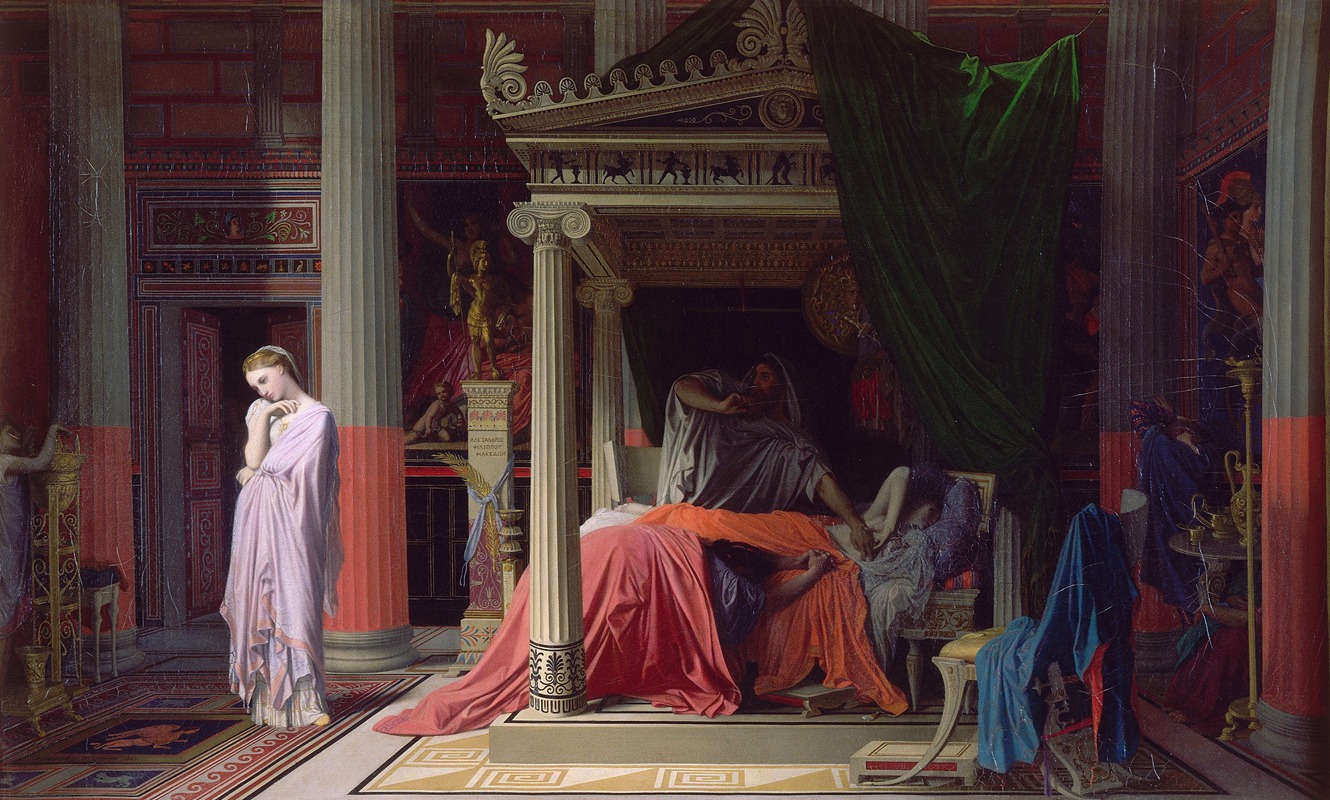
Antiochus and Stratonice
A hand-painted replica of Jean Auguste Dominique Ingres’s masterpiece Antiochus and Stratonice, meticulously crafted by professional artists to capture the true essence of the original. Each piece is created with museum-quality canvas and rare mineral pigments, carefully painted by experienced artists with delicate brushstrokes and rich, layered colors to perfectly recreate the texture of the original artwork. Unlike machine-printed reproductions, this hand-painted version brings the painting to life, infused with the artist’s emotions and skill in every stroke. Whether for personal collection or home decoration, it instantly elevates the artistic atmosphere of any space.
Jean Auguste Dominique Ingres' painting Antiochus and Stratonice is a neoclassical work completed in 1840. The painting depicts a scene from ancient history, specifically a story recounted by the Greek historian Plutarch and later popularized in various literary and artistic traditions. The narrative centers on the emotional and dramatic moment when Antiochus, the son of Seleucus I Nicator, one of Alexander the Great's generals and the founder of the Seleucid Empire, falls gravely ill due to his unrequited love for his stepmother, Stratonice.
In the story, Antiochus's condition baffles his physicians until the court doctor, Erasistratus, discovers the cause of his illness. Erasistratus observes that Antiochus's pulse quickens and his demeanor changes whenever Stratonice is present. Realizing that the young prince is suffering from a hopeless love for his father's wife, Erasistratus informs Seleucus of the situation. In a dramatic act of selflessness, Seleucus decides to relinquish Stratonice to his son, allowing them to marry. This act not only saves Antiochus's life but also demonstrates the themes of sacrifice and familial duty.
Ingres' painting captures the moment of revelation and emotional intensity. The composition is carefully arranged in a neoclassical style, emphasizing clarity, order, and balance. The figures are depicted with meticulous attention to detail, and their expressions convey the depth of the story's emotional stakes. Stratonice is portrayed with grace and beauty, while Antiochus appears pale and weakened, emphasizing his physical and emotional suffering. Seleucus, on the other hand, is depicted with a sense of authority and compassion, embodying the paternal sacrifice central to the narrative.
The painting reflects Ingres' mastery of historical subjects and his dedication to the neoclassical tradition, which sought to revive the art and ideals of ancient Greece and Rome. Ingres was known for his precise draftsmanship and his ability to convey complex emotions through composition and form. Antiochus and Stratonice is a testament to these skills, as well as to his interest in exploring themes of love, duty, and human vulnerability.
Today, the painting is housed in the Musée Condé in Chantilly, France. It remains an important example of Ingres' work and a significant representation of neoclassical art in the 19th century.






